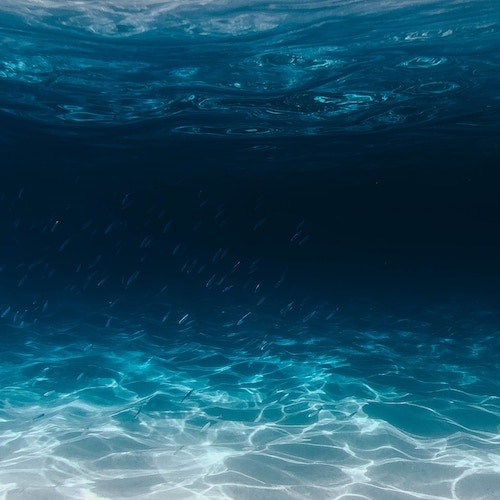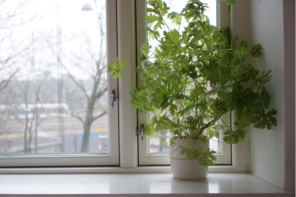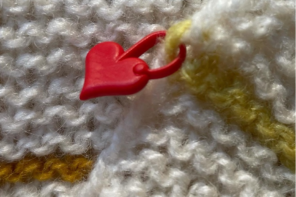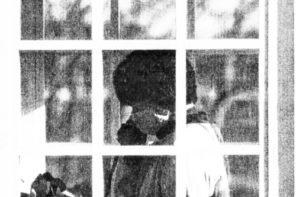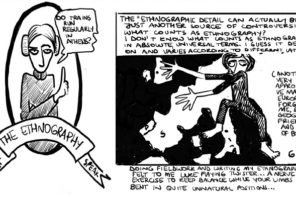Introduction to the work of Di-Andre Caprice Davis
Di-Andre took part in the Fluid Mosaic by creating a 3rd part of her ongoing art project: “Not Your Kind of Artist” entitled: Part 3- More than what you Thought. I met Di-Andre Caprice Davis when she was at the art residency Alice Yard in Trinidad and Tobago (WI). In conversation, the artist explained the title of the series of works. That is, in Jamaica, as is the case in the entire Caribbean region, an ‘artist’ is almost exclusively conceived as someone involved with music and performance practices. The general public remains suspicious toward visual arts.
This entire series functions as visual statements about making art and how to see it. Her art practice elicits a process of encoding and decoding, as a model of communication. Following Stuart Hall’s model (1973) in interpreting the media messages, Davis’ audience plays an active role with the videos she displays, relying on their own social contexts for interpretation.
With her series Part 3- More than what you Thought, she proposes sensorial correspondence with the youth of the Caribbean region and elsewhere, and the general audience. In collaboration with the concepts of the Fluid Mosaic, correspondence is thought of in the way that anthropologist Tim Ingold (2007) distinguished between interaction and correspondence. He defines the latter as the in-between state that articulates a divided world. In-between (different from the two separated words: in between), is a movement of generation and dissolution in a world of becoming where things are not given yet. It is an ongoing condition, a midstream.
According to Davis: “One of my major interests is to experiment with different artistic methods as a way to help with psychological disorders, self-development, memory, problem-solving, consciousness, creativity and thinking. Keeping a mind free to experiment without knowing where it will lead is important to me. This approach allows for discoveries which are part of the creative learning process. I believe that this is a major aspect of socio-emotional development and it fosters a better way of living” (2019). For Di-Andre art practice has an educational objective: she is interested in reaching out to young people with their own tools and registers. Thus, she most often uses free mobile applications from which she makes postproduction, as well as online generators.
“Not Your Kind of Artist” Part 3- More than what you thought and the Fluid Mosaic
The project is a digital installation presenting 8 screens. Three of them will be shared here for the Virtual Museum of AllegraLab.
Di-Andre Caprice Davis takes photos of nature and elements of her country, Jamaica, the urban areas of Kingston and St Andrew, and manipulates them into a new 3rd space, one that constitutes a digital environment. Her work is a mosaic of entities and human beings in a constant state of transformation (Best 1999) and historic manipulation. The artist Caprice Davis shows a visual and sound polyrhythm (Benítez-Rojo 2001) that describes a contrapuntal aesthetic (Ortiz 1940). According to Benítez-Rojo (2001), the heterogeneous societies that constitute the Caribbean are inhabited by “People of the Sea” (p.28). He uses this specific term in order to highlight the various phases of displacements Caribbean people have endured over history. Caprice Davis’ work is concerned with ‘caribbeanness’, and with people of the sea, who live in postindustrial Jamaica.
The sea for the artist triggers erratic displacements that accompany living beings, from plants, like the mangrove seeds that float from one land to another; like the hummingbirds that migrate long distances following the changing tropical weather; and like people whose historical displacements and contemporary migrations seem unending.
Focusing on the motion of the water, the waves and the plants, the work aims to show that: “There is more in the Caribbean than just trauma or slavery” as the artist explained during a conversation in 2019. Her Caribbean storytelling challenges eurocentric and 1st world representations, that conceive of Caribbean countries exclusively as a post-slavery mortified culture which maintains people in a subordinate position.
These pieces represent the sea, the liquidity of colors and materials, and their mosaic assembly, connect relation-ships (Cozier 1990) visually and aurally. In the screenings, dominant patterns are puzzles of liquid visual realities are in motion.
In Screen 1 of her series, the colors: black and white, gray, shadowiness and nuances recall the oily surface of the ocean, or of rivers when they are polluted. The images of this screen were taken at the moment when a hospital ship was carrying out medical treatments. The artist described her sensorial memories while recording the images of the putrid smell on the shore resulting from an oil spill. She continued sharing her memory of fishermen’s boats floating on the oily waters while they were fishing for the local markets. The fluid surface we see shows the coexistence, the passage and the incompatibility between the elements of oil and water.
It is like a “pull and push situation” she said, comparing it metaphorically to the situation of the art communities in Jamaica (2019). This last relationship between art and the artistic scene’s social condition in the country explicitly reflects the fluid mosaic itself.
Caprice Davis’ work shows disturbances that provoke entities’ mutation. It proposes a natural and digital manipulation of the environment. The oily waters are seen from an in-between position, as the viewer and the artist are both below and above the surface. Moreover, the visual deformation of the oily water conveys the meaning of the fluid mosaic, in which two apparently immiscible elements get together and form a new warped reflection of their previous pure selves. In the artist’s video, the viewer is able to observe a deformed version of the fish; as in the case of the fluid mosaic, the water in the video transforms, making any neat visible perspective impossible. Moreover, the fish can be interpreted as a metaphor of the human condition on the land, illustrating the Darwinian principles of survival.
Di-Andre Caprice Davis’ use of colors functions like a fluid mosaic (see Screens 8). Like its particles, the colors are fluid and organized. The elements coexist together, passing through the pieces of flowers, plants, animals. There is no direction but a flow, which is defined by Victor Turner (Schechner 1990) as a spontaneous movement in which action and awareness are one. Moreover, the flow is an experience of playing (Csikszentmihalyi in Schechner (2013)): an inner experience of involvement that the artist wants to arouse in the young audience in relation to her works.
In conclusion, especially with Screen 12, she highlights the porosity of materiality and the continuous process of eternal passing of the sea itself. The same sea that “shapes” the lives of Jamaicans is blurred by the natural light effect of the slow motion. It is per se, the visual representation of the concept of the fluid mosaic, where organic parts flow and constantly modify and hybridize the correspondence between the viewers and the artist.
References
Benítez-Rojo, Antonio. 2001. The Repeating Island. Durham: Duke University Press.
Best, Lloyd. 1999. “Making Mas with Possibility: Five Hundred Years Later.” In Enterprises of the Indies, edited by George Lamming, 294-297. POS: Trinidad and Tobago Institute of the West Indies.
Cozier, Christopher. 1990. Contemporary artist, personal notes 1990-1996.
Ingold, Tim. 2007. Lines: a brief history, London: Routledge.
Ortiz, Fernando. [1940] 1995. Cuban Conterpoint. Tobacco and Sugar. Durham: Duke University
Schechener, Richard and Willa, Appel. 1990. By means of performance, Cambridge University Press.
Schechener, Richard. 2013. Performance Studies: An Introduction. London: Routledge.
Stuart, Hall. 1973. Encoding and Decoding in the Television Discourse, University of Leicester.
Featured image by Silas Baisch (courtesy of Unsplash.com)

